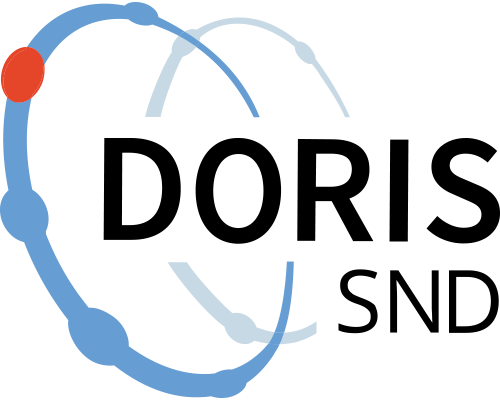PERMTHAW dataset 1, including soil biochemical, GHG flux and microbiological data from the tussock tundra sites Latnjajaure and Corrvosjávri in northern Sweden
https://doi.org/10.5878/q65n-vv46
Permafrost soils contain approximately 1672 petagram carbon (C), twice the amount of the current atmosphere, and constitute 50% of the world’s belowground C pool. Along with the current change in climate these high latitudinal soils experience increased temperatures, more than any other region, with permafrost degradation as a result. Such thaw of permafrost releases ancient organic matter that has been stored in the frozen soils for centuries. Following microbial degradation, this organic matter can be released to the atmosphere as carbon dioxide (CO2) and methane (CH4), further influencing the climate systems. Thus, a changed climate leads to server alterations of the carbon (C) balance in Arctic and high altitude ecosystems. However, research up to today has mostly focused on the impact of permafrost thaw and the time horizon immediately following this degradation.
This project aims for understanding the future that lies ahead, following thaw and establishment of new non-permafrost ecosystems, and how the predicted climate variability will influence these soils on a decadal timescale. By using a natural occurring permafrost degradation transects, this project investigates how the C cycling changes following thaw.
Site description:
Two tussock tundra sites was used in this study: at lake Latnjajaure (68°21.2’N, 18°29.3’E and 981 m a.s.l.) and at lake Corrvosjávri (68°24.9’N, 18°38.1’E, and 814 m a.s.l.). Both sites and the initial vegetation description and method for vegetation survey (repeated in this study) are described in Molau 2010.
At each site 9 soil collar (diameter of 20cm) was installed in groups of three.
Data:
Vegetation data, see Molau 2010.
CH4 and CO2 measurements were conducted with an ultraportable greenhouse gas analyser (Los Gatos Research, San Jose, California, U.S.) connected to a transparent chamber (height: 20 cm, diameter 20cm).
Soil temperatures (hand held thermometer) and soil moisture (Delta-T device) was measured along with each flux measurement.
Soil temperatures were also measured at -2 and -30 cm using a soil probe and at TinyTag logger and used for comparison using temperatures averaged for each measurement period.
Soil biogeochemical and microbial data was sampled at surface (0-5cm) and deep (15-30cm) soils using a soil corer at bi-weekly interval during growing-season 2017. Flux measurements were conducted at bi-weekly intervals also in 2016 and 2018.
Molau U. 2010. Long-term impacts of observed and induced climate change on tussock tundra near its southern limit in northern Sweden. Plant Ecol Divers 3:29–34.
Formats:
.xlsx and sheetwise semicolon-separated .csv (UTF-8).
Column headings are verbose where possible. Refer to the soil data readme sheet for further heading details.
Data files
Data files
Citation and access
Citation and access
Creator/Principal investigator(s):
Research principal:
Data contains personal data:
No
